Estimated Read Time: 8 Minutes
The Parrot Finch
Welcome to Part 9 of The Finches of Serenity!
This is our informational blog series about the delightful finches that call our aviaries, home.
This article will cover information about the joyful and friendly Parrot Finch!
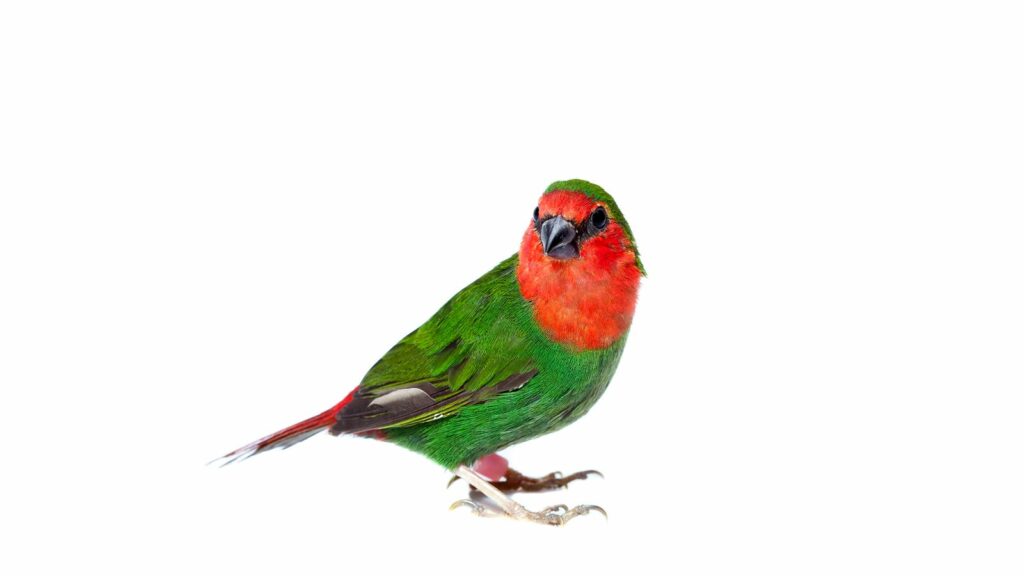
Natural Habitat of a Parrot Finch
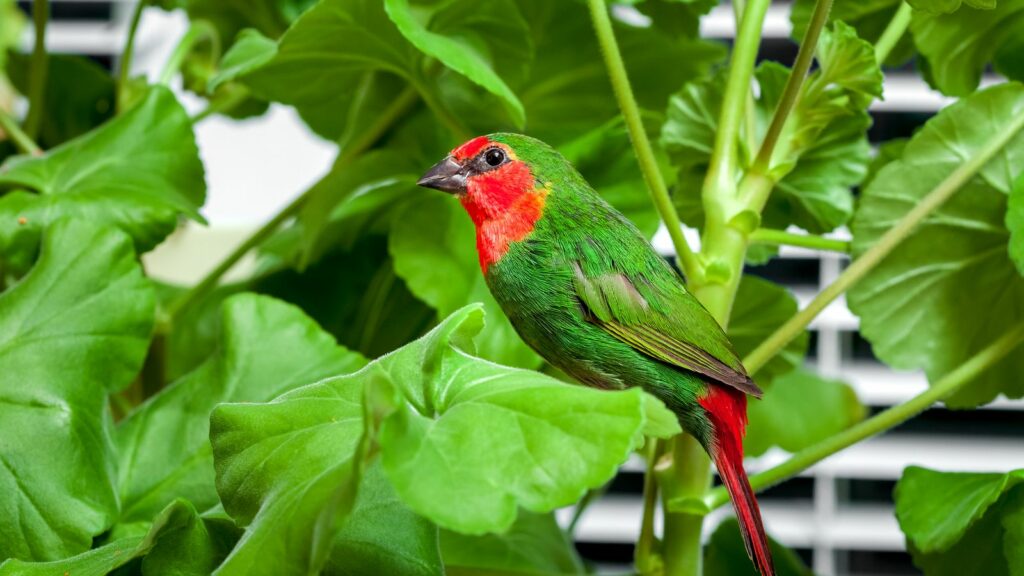
The parrot finch’s natural habitat is rather widespread in the eastern hemisphere.
They reside in areas between Indonesia, Malaysia, New Guinea, regions in northern Australia, and in some Pacific Islands.
The climate and landscape of these regions are tropical forests, shrublands, and grasslands.
Plus, species in more populated areas have adapted well to urbanization, so you can find them in gardens, parks, and forests.
These areas provide an adequate food source with insects, vegetation, fruits, and berries.
Physical Characteristics
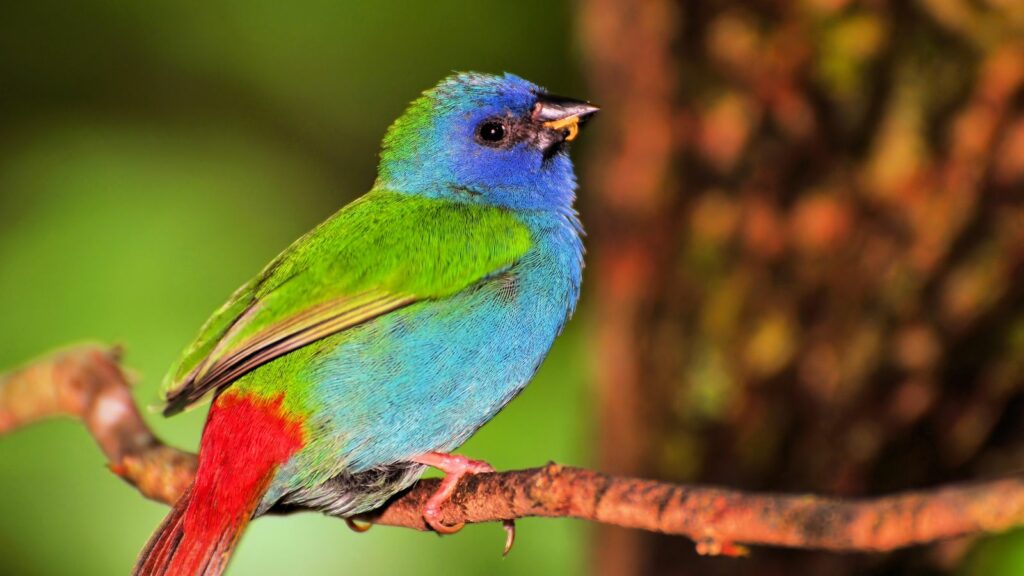
The male parrot finch will grow to around 5 inches from beak to tail. Females are usually a little bit smaller, but not by much.
The most common plumage color for parrot finches is a green body and wings. The head, brow, neck/chest, and tail are bright red. And their beaks are black and shiny.
Other common color mutations of parrot finches are combinations of blue, pink, orange, and tri-colored.
Much like its cousin, the Gouldian finch, the parrot finch can produce a captivating mix of vibrant colors.
How to Tell Apart Males, Females, and Fledglings
It’s hard to tell the sexes apart because their colors are very similar.
The primary signifier is that a female parrot finch’s colors are usually duller than the males’.
Fledglings, on the other hand, are a dull olive color until they molt.
A Parrot Finch’s Bird Song
Can parrot finches talk?
They may share the name of talkative parrots, but parrot finches do not speak.
They do sing, though. Their songs are relatively short and, unless it’s breeding season, you won’t hear too much noise from them.
Female parrot finches make even less noise but will make short chirps every now and then.
If you haven’t heard the delightful songs or seen them interact with other birds, play the video below!
Behavior and Temperament
Parrot finches are active and curious birds that live in small groups in the wild.
In general, they’re very gentle and friendly with other birds and human caretakers, which makes them much easier to include in mixed aviaries.
As such, parrot finches are a popular household pet and also a favorite in our Serenity Aviaries.
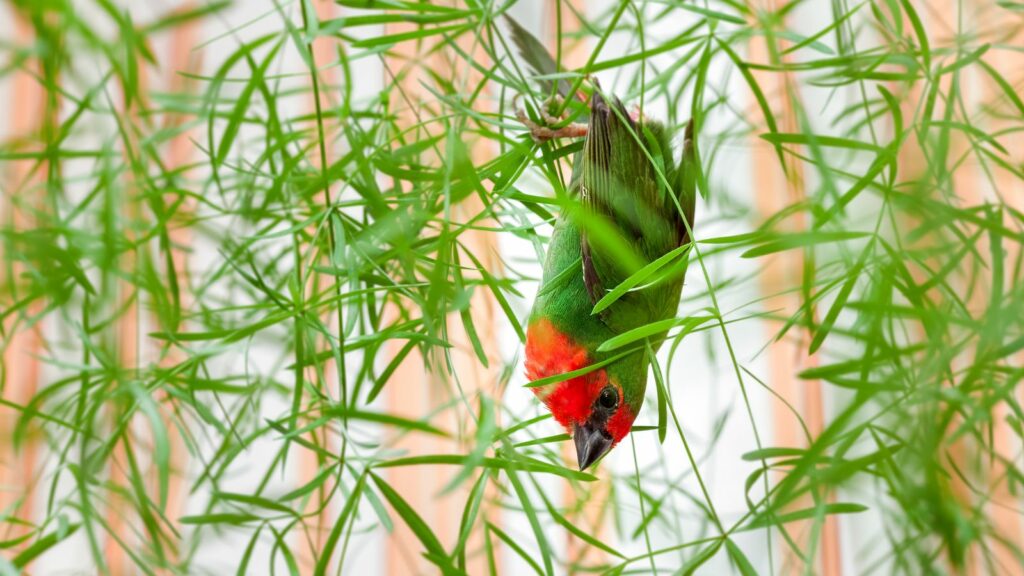
An interesting fact about parrot finches is that they’re almost nocturnal.
In a mixed aviary, parrot finches are usually the last ones to roost in their nest. They’re also the first ones to stir in the morning.
Another behavioral trait is that parrot finches love water.
They enjoy jumping in and out of water and they’ll gladly stop to bathe a couple of times a day.
Compatibility With Other Birds
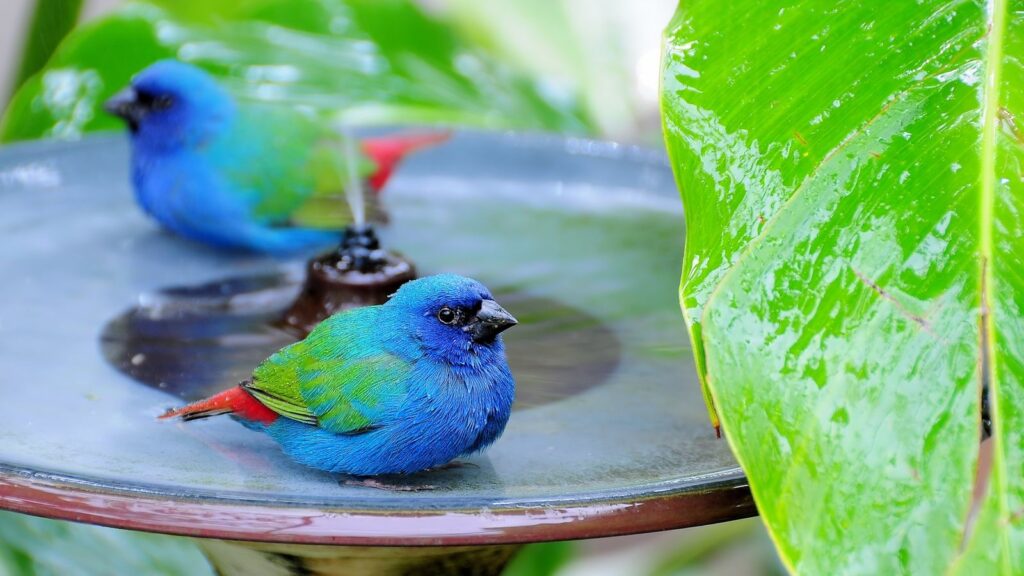
Parrot finches get along well with their own species, as well as others with similar temperaments.
The main rule we have is to include more females than males in a single enclosure.
A ratio with more males than females encourages competition for their mate, so frequent conflicts would ensue.
In the breeding season, parrot finches go from a passive personality to a little pushier.
This is normal for any finch, but it’s a change in their personality that we keep an eye on for the safety of all the birds.
Want to learn what specific birds they should and shouldn’t be paired with? Check out this finch compatibility chart!
Breeding Habits of Parrot Finches
Unlike some birds, parrot finches may breed year-round.
They are also monogamous, so they’ll find one mate and breed for life.
If a mate were to die, however, it’s best to add a new mate into the cage as soon as possible.
The Breeding Process
A hen will lay around three to six eggs per clutch.
Both the cock and hen will help incubate the eggs for about two weeks.
The finches will be fledglings about 21 days after hatching.
About two months after hatching, the fledglings will be weaned from the nest.
A few weeks after the fledglings leave the nest, we carefully move them to a new enclosure.
If the parent finches decide to mate once more, there tends to be aggression between the parents and the fledglings.
So, for the sake of all the birds, we safely remove them and place them in a different aviary.
NOTE: We offer breeding pairs for parrot finches, if available. If your company wants an aviary and a collection of finches, learn about our leasing options today!
4 Tips for a Parrot Finch Aviary
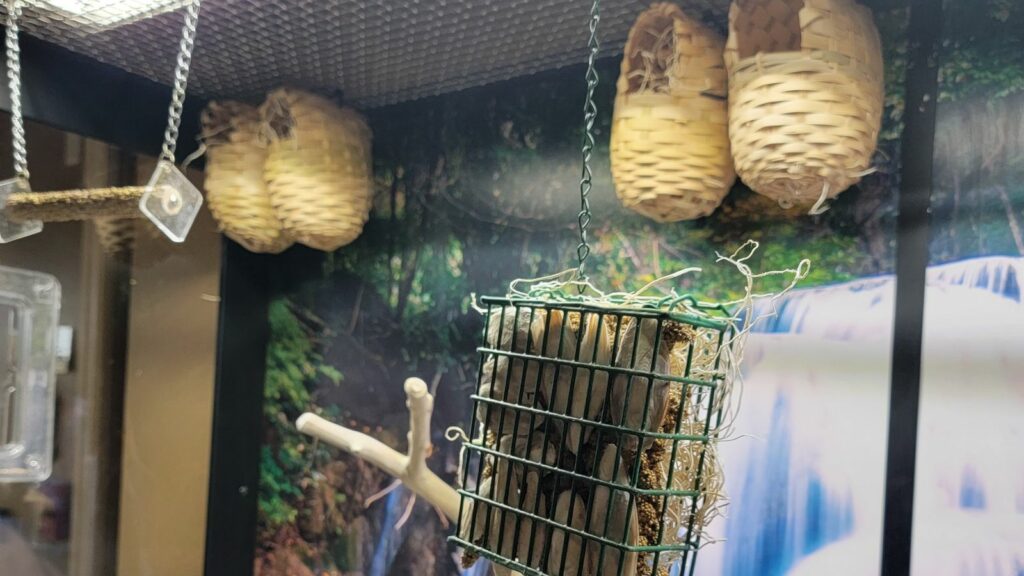
1) Size
To have a happy parrot finch, a large aviary is necessary.
As we mentioned, parrot finches are very active. They like to jump from perch to perch, fly back and forth, and chase the other birds around the aviary.
They’re social birds, but they’ll also want to establish their own territory.
If a parrot finch feels overly crowded, it will surely feel stressed, agitated, and could even get sick.
2) Shape
Because they enjoy flying back and forth, the length of their enclosure is more important than the height.
Also, avoid using rounded edges for the structure, as this removes some of their available space.
3) Materials
Chewing and ingesting materials can be an issue for finches in an aviary.
The structure should be free of softwood, paint, untreated steel, and soft plastics.
By using high-grade materials, like solid oak, stainless steel wire, and high-grade laminate panels, Serenity Aviaries don’t allow for chewing or ingestion.
4) Features and Accessories
You need food and water access, ventilation, adequate internal temperature, and lighting for a comfortable parrot finch.
Additional accessories like water and food sources, nests, swings, and branches are needed for rest, entertainment, and nourishment.
NOTE: Finches feel safer when they’re higher up, especially in an aviary. We position their nests, branches, and swings as high up in the aviary as possible.
Looking for Your Hassle-Free Aviary?
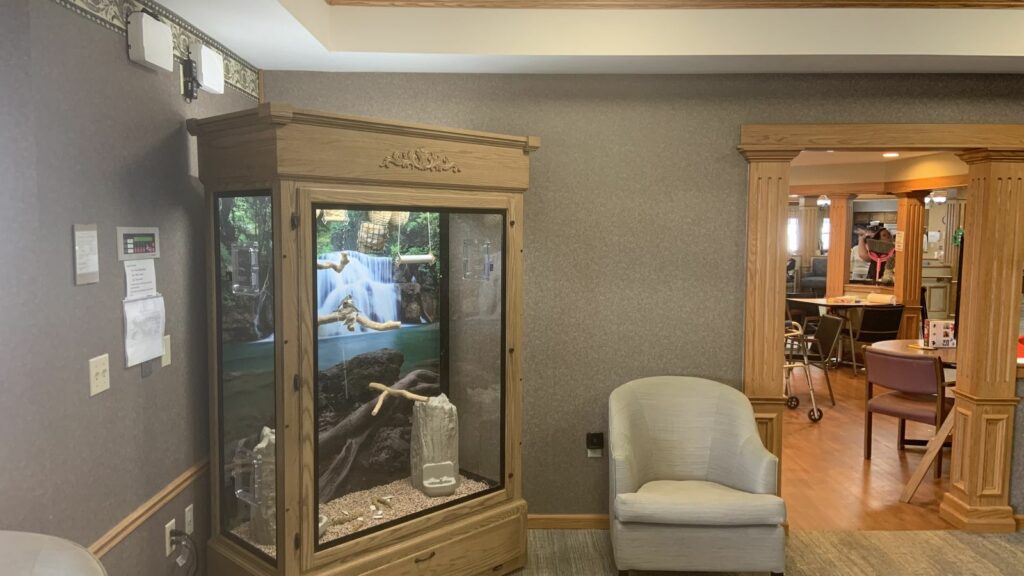
At Serenity, we handcraft spacious aviaries for business facilities in the US.
We also include the birds, feeders, decor, and provide routine services!
The Services We Provide:
- Remove and replace bedding.
- Clean droppings tray.
- Wipe down all surfaces.
- Scrub all cracks and crevices.
- Sanitize and rotate accessories.
- Sanitize and replenish the Infinity Feeder.
- Thoroughly rinse and dry the enclosure.
Next Up: The Society Finch!
Thank you for visiting our blog! We will continue our finch-focused blog series on Tuesday, October 31st, 2023, so check back in to learn about the Society Finch!
Also, keep an eye out for our other informative blog posts on birds, aviaries, fish, and aquariums!
